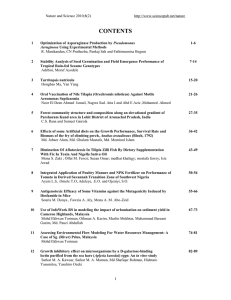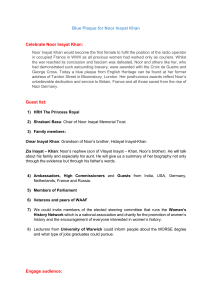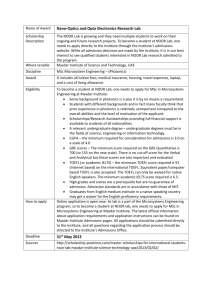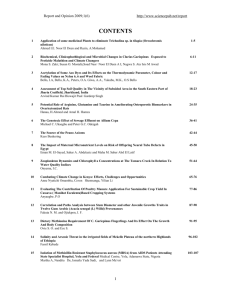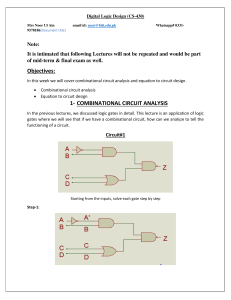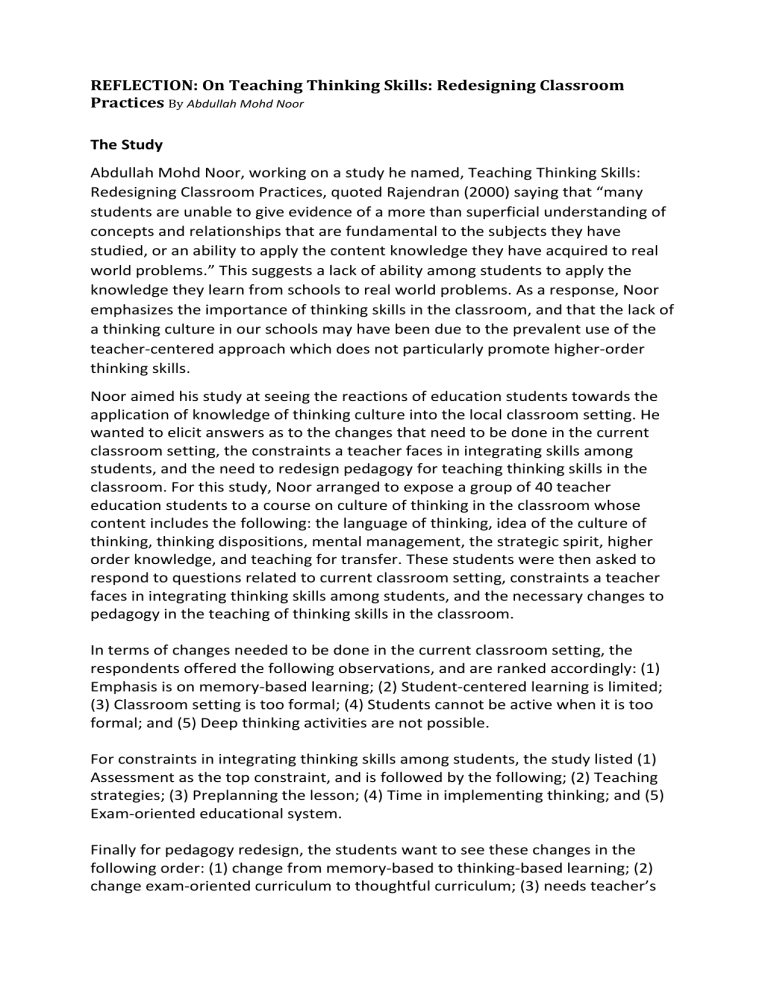
REFLECTION: On Teaching Thinking Skills: Redesigning Classroom Practices By Abdullah Mohd Noor The Study Abdullah Mohd Noor, working on a study he named, Teaching Thinking Skills: Redesigning Classroom Practices, quoted Rajendran (2000) saying that “many students are unable to give evidence of a more than superficial understanding of concepts and relationships that are fundamental to the subjects they have studied, or an ability to apply the content knowledge they have acquired to real world problems.” This suggests a lack of ability among students to apply the knowledge they learn from schools to real world problems. As a response, Noor emphasizes the importance of thinking skills in the classroom, and that the lack of a thinking culture in our schools may have been due to the prevalent use of the teacher-centered approach which does not particularly promote higher-order thinking skills. Noor aimed his study at seeing the reactions of education students towards the application of knowledge of thinking culture into the local classroom setting. He wanted to elicit answers as to the changes that need to be done in the current classroom setting, the constraints a teacher faces in integrating skills among students, and the need to redesign pedagogy for teaching thinking skills in the classroom. For this study, Noor arranged to expose a group of 40 teacher education students to a course on culture of thinking in the classroom whose content includes the following: the language of thinking, idea of the culture of thinking, thinking dispositions, mental management, the strategic spirit, higher order knowledge, and teaching for transfer. These students were then asked to respond to questions related to current classroom setting, constraints a teacher faces in integrating thinking skills among students, and the necessary changes to pedagogy in the teaching of thinking skills in the classroom. In terms of changes needed to be done in the current classroom setting, the respondents offered the following observations, and are ranked accordingly: (1) Emphasis is on memory-based learning; (2) Student-centered learning is limited; (3) Classroom setting is too formal; (4) Students cannot be active when it is too formal; and (5) Deep thinking activities are not possible. For constraints in integrating thinking skills among students, the study listed (1) Assessment as the top constraint, and is followed by the following; (2) Teaching strategies; (3) Preplanning the lesson; (4) Time in implementing thinking; and (5) Exam-oriented educational system. Finally for pedagogy redesign, the students want to see these changes in the following order: (1) change from memory-based to thinking-based learning; (2) change exam­oriented curriculum to thoughtful curriculum; (3) needs teacher’s creativity in imposing culture of thinking; (4) integrate thinking skills in lesson planning; (5) and teaching thinking skills across curriculum. In his discussion of the results of the study as well as its implication, Noor believes that it is possible to change teaching approaches from teacher-centered to student-centered but would require that teachers must be well-equipped with various approaches and methods of teaching, that teachers must be well-trained in the culture of thinking, that schools must have goals in developing independent learners and thinkers, and that schools must encourage the implementation of teaching approaches that develop thinking students and thinking culture in a progressive manner. The pedagogical redesign as suggested by the participants to the study requires that the integration of the thinking culture in the classroom should consider lesson planning, thinking­based learning, teacher’s creativity, thoughtful curriculum and teaching thinking skills across curriculum. Noor in his conclusion agrees with the student-participants that developing a thinking culture in the classroom is a big challenge for teachers, and concedes that implementing thinking skills will definitely takes time. But he offers an advice. He said that teachers as well as teaching thinking skills needed reorientation in order to integrate the teaching of thinking skills. He further suggests that constant attempts shall be made at developing thinking as a habit of the mind and the eventual creation of a culture of thinking. Teachers, he said, will have to be familiar with the thinking culture, and should embody all of its features before a thinking culture can fully be implemented in the classroom. My take Noor findings are no surprise to us in the Philippine academe. In fact, the many international exams involving our students validate what I lament to be the current state of Philippine education – the lack of a motivated and purposive desire to change. It is no secret that the educational system has been held hostage by teacher-centeredness and the apathy of those who hold the reins in educational governance. Results of surveys related to reading comprehension among our students leave much to be desired, and in essence, have magnified the problem, and put it on center stage. And yet, we plod on as if there is nothing to worry about. Would setting up, developing, nurturing, and encouraging a culture of thinking help? The answer of course is yes. Abdullah Mohd Noor, in his study, Teaching Thinking Skills: Redesigning Classroom Practices, said so. A thinking culture, according to Noor’s source, is about how to transform the culture of a particular classroom into a culture of thinking, with the purpose of teaching thinking to prepare students for a future of effective problem-solving, thoughtful decision making and lifelong learning. Preparing our children and sending them into the adult world amid the vortex of rapid changes in life, society, and economics requires that we prepare them with the necessary tools of life. Our children should be equipped with critical thinking, problem-solving, and creative thinking skills. This is where every educator agrees. But why are we not there yet? Focus, motivation, will, determination. As a nation, we simply lack focus. We lack motivation, the will, and the determination to succeed. The department of education, the government agency tasked to educate the country, has gone so vast and unwieldy, and the people running it, weighed down by the enormity of its responsibility. We also have not had the luck of having national leaders who make education their priority. Every Philippine leader starts with a vision, and ends with nonchalance. So how has the idea of culture of thinking not taken off at our public schools when it has become the toast of the education world? Culture of thinking includes the language of thinking, thinking dispositions, mental management, strategic spirit, higher order knowledge, and teaching for transfer. All of this combine and find expressions in the way a student solves a problem or approach an issue by employing critical thinking, logic, creativity, and reflection. This of course mean that teachers should start moving away from teacheroriented approach and begin to embrace and cultivate student-centered delivery of lessons. Would this work in today’s public schools? My thought is that it could, very much so, the unwieldiness of the education system and our political leaders’ nonchalance notwithstanding. Teachers are within their professional capacity to exercise the power to create and develop a culture of thinking in their classrooms. Noor’s study is a welcome revelation that teachers can make use of to start their journey in this regard. Teachers have it in them to make culture of thinking a permanent fixture in their classrooms, and most especially in their lives. But isn’t it great if all of our energy and focus are directed towards making education a priority, and the establishment of culture of thinking something that we all can embrace?


